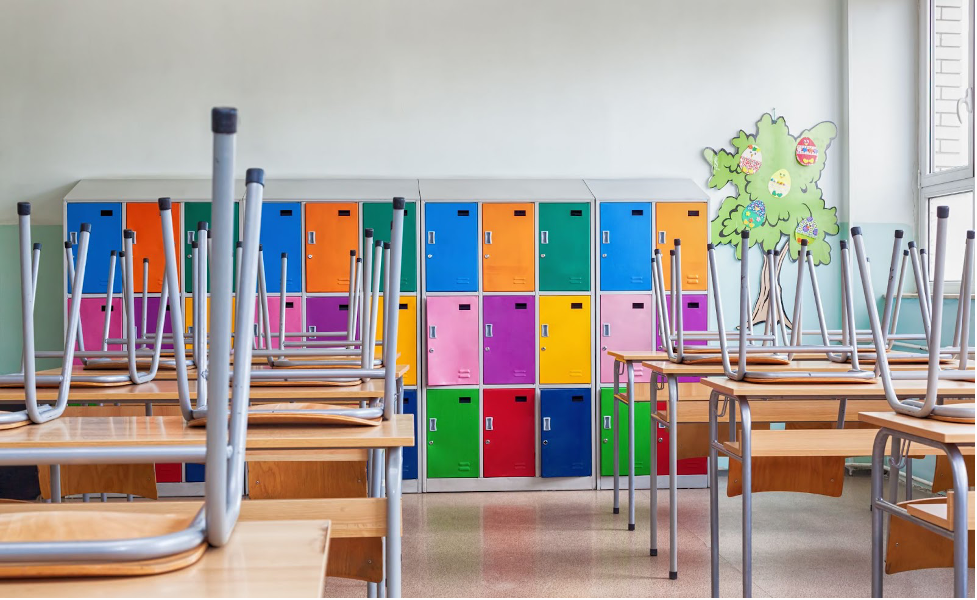Improving a school’s energy performance can affect more than utility bills — it can also boost indoor air quality and learning outcomes, making the classrooms healthier for students and staff. A new campaign, Efficient and Healthy Schools, will provide practical guidance on ventilation upgrades that can increase energy efficiency, lower costs, and improve the air at K-12 schools nationwide.
Given guidance from the Centers for Disease Control (CDC) on preventive measures to support in-person learning, many schools are looking for ways to improve ventilation, filtration, and indoor air quality. In particular, American Rescue Plan education funds, aimed at improving ventilation in schools to prevent COVID-19, are available to support schools in making operational changes as well as longer-term investments, such as upgrading heating, ventilation, and air conditioning (HVAC) systems.
The Department of Energy’s Lawrence Berkeley National Laboratory (Berkeley Lab) is a key facilitator in getting school districts to sign up and get on board in the Department of Energy’s new campaign, which is working toward improving energy efficiency and the air our students, faculty, and staff breathe in the nation’s schools.
Participating schools receive practical guidance on HVAC solutions and other technologies that can improve energy performance and indoor air quality. In particular, the campaign encourages schools serving low-income student populations to participate. DOE leads the campaign with technical support from Lawrence Berkeley National Laboratory (Berkeley Lab) one of the nation’s 17 national laboratories. The U.S. Environmental Protection Agency and the U.S. Department of Education are organizing partners on the campaign.
“Research on indoor air quality in schools shows direct effects on students and teachers,” said Rengie Chan, a research scientist at Berkeley Lab who is leading the campaign. “We know that well-ventilated classrooms paired with high efficiency filtration can lead to improved student performance and fewer reports of respiratory symptoms among the occupants.”
Joining the campaign as either a participant or a supporter is free and only requires the completion of a web form.

To date, 26 school districts across 16 states have joined or are prepared to join the campaign, representing over 1.5 million students in 2,600 individual schools. Among these school districts, the Campaign provides recognition in four areas: efficient HVAC technologies, inspection and maintenance, ongoing monitoring and analytics, and team approach to support strategic investments. Today the Campaign announced its first round of recognition of six school districts for their best-in-class efforts in one or more areas:
- Boulder Valley School District, CO
- Charleston County School District, SC
- Columbia Public Schools, MO
- Davis School District, UT
- Greenville County Schools, SC
- Newark Board of Education, NJ
“In a time of unprecedented environmental and social challenges, OUSD believes collaboration and partnership are foundational elements in the work to implement sustainable solutions,” said Brendan Havenar-Daughton, former energy and sustainability manager for OUSD. “OUSD has signed on to the Efficient and Healthy Schools campaign to build relationships, share knowledge, and generate momentum towards greater investment in clean and healthy infrastructure for California’s K-12 scholars.”
“We’re looking forward to working hand-in-hand with indoor air quality experts, energy efficiency scientists, climate leaders, and fellow K-12 partners to find cost-effective and meaningful solutions to some of our most pressing maintenance challenges. The Efficient and Healthy Schools campaign has the potential to shine a brighter light on the rich value proposition of improving IAQ while decarbonizing our building systems,” Havenar-Daughton said.
The campaign offers recognition for exemplary school efforts. Those can include improvements to energy efficiency and indoor air quality through operation and maintenance, HVAC upgrades and replacement, ongoing monitoring and data analytics, and support for a culture for efficient and healthy school buildings. The Berkeley Lab researchers will gather information from school districts to document their efforts, and provide technical assistance in quantifying the benefits from their investments.
“By promoting the Efficient and Healthy Schools program, we can pair indoor air quality and energy efficiency and reward schools for the ongoing work of keeping their buildings safe, healthy and efficient, which is often overlooked,” said Heather Feigum, assistant director of facilities management for Cooperative Educational Service Agency 10, which supports school districts in Wisconsin.
Berkeley Lab’s Indoor Air Quality group is recognized as one of the best in the nation, and is lead in the area of Indoor Air Quality for the nation’s 17 national laboratories.
To learn more about the Efficient and Healthy Schools campaign and how to join as a participant or a supporter, visit the website: efficienthealthyschools.lbl.gov.
# # #
Founded in 1931 on the belief that the biggest scientific challenges are best addressed by teams, Lawrence Berkeley National Laboratory and its scientists have been recognized with 14 Nobel Prizes. Today, Berkeley Lab researchers develop sustainable energy and environmental solutions, create useful new materials, advance the frontiers of computing, and probe the mysteries of life, matter, and the universe. Scientists from around the world rely on the Lab’s facilities for their own discovery science. Berkeley Lab is a multiprogram national laboratory, managed by the University of California for the U.S. Department of Energy’s Office of Science.
DOE’s Office of Science is the single largest supporter of basic research in the physical sciences in the United States, and is working to address some of the most pressing challenges of our time. For more information, please visit energy.gov/science.
